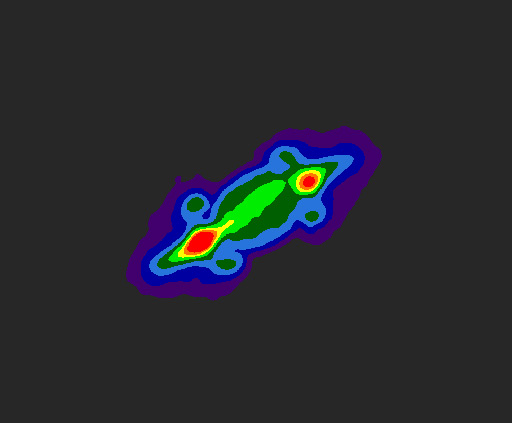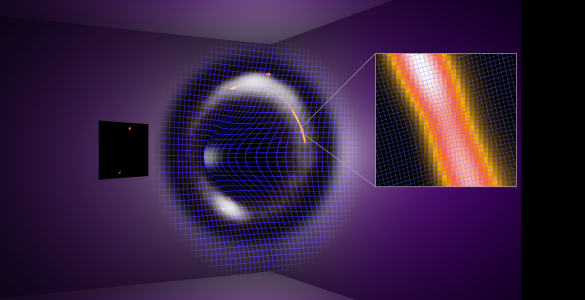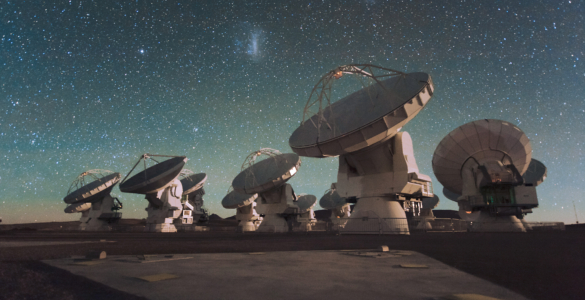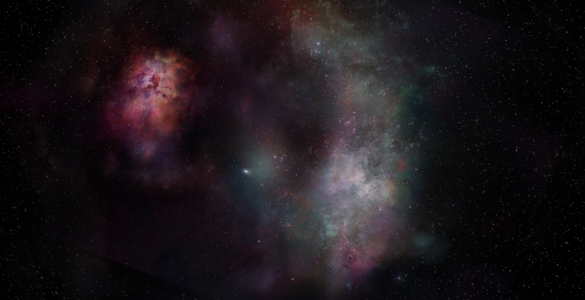Taking advantage of a rare cosmic alignment, scientists have made the first measurement of the speed at which the force of gravity propagates, giving a numerical value to one of the last unmeasured fundamental constants of physics.
“Newton thought that gravity’s force was instantaneous. Einstein assumed that it moved at the speed of light, but until now, no one had measured it,” said Sergei Kopeikin, a physicist at the University of Missouri-Columbia.
“We have determined that gravity’s propagation speed is equal to the speed of light within an accuracy of 20 percent,” said Ed Fomalont, an astronomer at the National Radio Astronomy Observatory (NRAO) in Charlottesville, VA. The scientists presented their findings to the American Astronomical Society’s meeting in Seattle, WA.
The landmark measurement is important to physicists working on unified field theories that attempt to combine particle physics with Einstein’s general theory of relativity and electromagnetic theory.
“Our measurement puts some strong limits on the theories that propose extra dimensions, such as superstring theory and brane theories,” Kopeikin said. “Knowing the speed of gravity can provide an important test of the existence and compactness of these extra dimensions,” he added.
Superstring theory proposes that the fundamental particles of nature are not pointlike, but rather incredibly small loops or strings, whose properties are determined by different modes of vibration. Branes (a word derived from membranes) are multidimensional surfaces, and some current physical theories propose space-time branes embedded to five dimensions.
The scientists used the National Science Foundation’s Very Long Baseline Array (VLBA), a continent-wide radio-telescope system, along with the 100-meter radio telescope in Effelsberg, Germany, to make an extremely precise observation when the planet Jupiter passed nearly in front of a bright quasar on September 8, 2002.
The observation recorded a very slight “bending” of the radio waves coming from the background quasar by the gravitational effect of Jupiter. The bending resulted in a small change in the quasar’s apparent position in the sky.
“Because Jupiter is moving around the Sun, the precise amount of the bending depends slightly on the speed at which gravity propagates from Jupiter,” Kopeikin said.
Jupiter, the largest planet in the Solar System, only passes closely enough to the path of radio waves from a suitably bright quasar about once a decade for such a measurement to be made, the scientists said.
The once-in-a-decade celestial alignment was the last in a chain of events that made measuring the speed of gravity possible. The others included a chance meeting of the two scientists in 1996, a breakthrough in theoretical physics and the development of specialized techniques that enabled the extremely precise measurement to be made.
“No one had tried to measure the speed of gravity before because most physicists had assumed that the only way to do so was to detect gravitational waves,” Kopeikin recalled. However, in 1999, Kopeikin extended Einstein’s theory to include the gravitational effects of a moving body on light and radio waves. The effects depended on the speed of gravity. He realized that if Jupiter moved nearly in front of a star or radio source, he could test his theory.
Kopeikin studied the predicted orbit of Jupiter for the next 30 years and discovered that the giant planet would pass closely enough in front of the quasar J0842+1835 in 2002. However, he quickly realized that the effect on the quasar’s apparent position in the sky attributable to the speed of gravity would be so small that the only observational technique capable of measuring it was Very Long Baseline Interferometry (VLBI), the technique embodied in the VLBA. Kopeikin then contacted Fomalont, a leading expert in VLBI and an experienced VLBA observer.
“I immediately realized the importance of an experiment that could make the first measurement of a fundamental constant of nature,” Fomalont said. “I decided that we had to give this our best shot,” he added.
To get the required level of precision, the two scientists added the Effelsberg telescope to their observation. The wider the separation between two radio-telescope antennas, the greater is the resolving power, or ability to see fine detail, achievable. The VLBA includes antennas on Hawaii, the continental United States, and St. Croix in the Caribbean. An antenna on the other side of the Atlantic added even more resolving power.
“We had to make a measurement with about three times more accuracy than anyone had ever done, but we knew, in principle, that it could be done,” Fomalont said. The scientists tested and refined their techniques in “dry runs,” then waited for Jupiter to make its pass in front of the quasar.
The wait included considerable nail-biting. Equipment failure, bad weather, or an electromagnetic storm on Jupiter itself could have sabotaged the observation. However, luck held out and the scientists’ observations at a radio frequency of 8 GigaHertz produced enough good data to make their measurement. They achieved a precision equal to the width of a human hair seen from 250 miles away.
“Our main goal was to rule out an infinite speed for gravity, and we did even better. We now know that the speed of gravity is probably equal to the speed of light, and we can confidently exclude any speed for gravity that is over twice that of light,” Fomalont said.
Most scientists, Kopeikin said, will be relieved that the speed of gravity is consistent with the speed of light. “I believe this experiment sheds new light on fundamentals of general relativity and represents the first of many more studies and observations of gravitation which are currently possible because of the enormously high precision of VLBI. We have a lot more to learn about this intriguing cosmic force and its relationship to the other forces in nature,” Kopeikin said.
This is not the first time that Jupiter has played a part in producing a measurement of a fundamental physical constant. In 1675, Olaf Roemer, a Danish astronomer working at the Paris Observatory, made the first reasonably accurate determination of the speed of light by observing eclipses of one of Jupiter’s moons.
The National Radio Astronomy Observatory is a facility of the National Science Foundation, operated under cooperative agreement by Associated Universities, Inc.
Contacts:
Dave Finley, NRAO
Socorro, NM
(505) 835-7302
dfinley@nrao.edu
Charles Blue, NRAO
Charlottesville, VA
(434) 296-0323
cblue@nrao.edu
Matt McGowan, University of Missouri-Columbia
(573) 882-6217
mcgowandm@missouri.edu
















